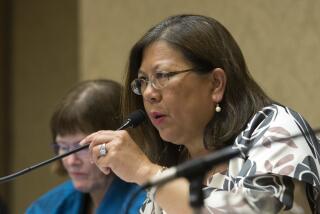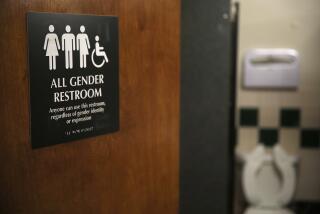The gender gap and the GOP’s future
You can bet your Hillary Clinton buttons that one of the biggest chunks of the body politic that political pathologists will be putting under the lab microscope is the gender gap: women’s votes.
“Remember the ladies,” Abigail Adams exhorted her husband, John Adams, as he and the other Founding Fathers designed the new nation’s political philosophy. Otherwise, she added, “we are determined to foment rebellion.”
It’s been a low-key, 200-year-long rebellion, but she was right. Remember the ladies? Any modern politician would be hard-pressed to forget them. The gender gap has become one of the most durable differences between Republican and Democratic voters.
Longtime political observer Dick Morris, who had predicted a Mitt Romney victory, acknowledged on Fox News’ postelection coverage that “the percentage of single women, minorities and voters under 30 is so large at this point that unless the Republican Party fundamentally changes its appeal to those voters, it can never win an election,”
I say “women’s votes,” not “ the woman vote,” because it’s not monolithic.
From the exit polls, President Obama’s support from men slipped a few points from 49% four years ago, but women supported the president over Romney by 55% to 44%.
It’s a Democratic firewall, but with an asterisk. Just a little over 1 in 3 white men voted for Obama. And married women preferred Romney, 53% to 46%. (Divorced, single or widowed women voted for the president by more than 2 to 1.)
Every election cycle there’s some sub-group of women -- the so-called soccer moms of one generation, the security moms of another -- the suburban, married, often white women who are just about as likely to vote Republican as their husbands.
Still, depending on how you cut up the numbers, whenever Democrats have won in the last couple of decades, it’s often the gender gap that’s given them the margin of victory.
So where did this gap come from?
You can go back to Abigail Adams, and then to the 19th century, when women crusaded to get the vote, and the legal thinking about women’s rights was that husband and wife are one person, and that person is -- the man.
Before the Civil War, suffragists made common cause with abolitionists and with their fellow disenfranchised black Americans. It was a demographic coalition whose echoes we see today, when the durable demographics of the Democratic majority are teaching the Republican Party that, as Morris said, “this isn’t your father’s Republican Party.” And the 2008 Obama vote was not a political one-night stand romance but a durable marriage.
What is the genesis of this gender gap?
It wasn’t until 1920, 50 years after black men got the vote -- how hard it was for them to exercise it is another matter -- that American women did.
A lot of businesses had been against women’s suffrage. The liquor industry, for one. Many men spent their paychecks in the saloon and left their families hungry and needy, and the booze interests were afraid women would vote to ban liquor altogether -- although paradoxically, Prohibition became the law of the land a year before women won the right to vote.
Textile and mining companies were afraid women would vote to end child labor and endorse worker safety laws. All those things did happen after women got the vote, but not necessarily because of it.
But the gender gap started widening around 1980, when Republicans abandoned their support of the Equal Rights Amendment, which they had endorsed for 40 years.
And then the issues of legal contraception and abortion widened the gap even further, as women gradually became both a majority in the workforce and in the voting booths. Tellingly, healthcare reform is an issue that polls significantly higher with women than it does with men.
What’s the upshot of all of this? That the gender gap has become a part of political wisdom, and part of the new American voting demographic.
Through this last election cycle, ads and campaign talking points zeroed in on female voters as much as they did for veterans or seniors or union members.
It’s why you heard again and again about matters of defunding Planned Parenthood, and abortion, and “legitimate rape.”
And it’s why, in all likelihood, you’re going to hear slightly different versions of the same pitch all over again, four years hence -- except perhaps with a different tone coming from a Republican Party that may again “remember the ladies.”
ALSO:
Doyle McManus: Obama’s second act
Patt Morrison Asks: Follow the money
Long campaign, long election night wait for results
Follow Patt Morrison on Twitter @pattmlatimes
More to Read
A cure for the common opinion
Get thought-provoking perspectives with our weekly newsletter.
You may occasionally receive promotional content from the Los Angeles Times.







